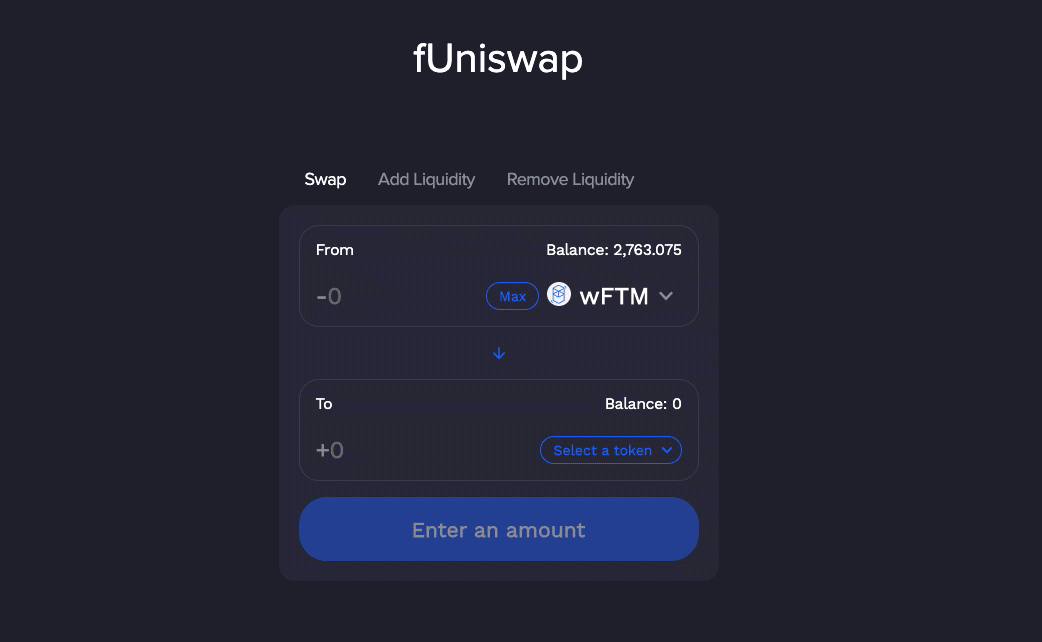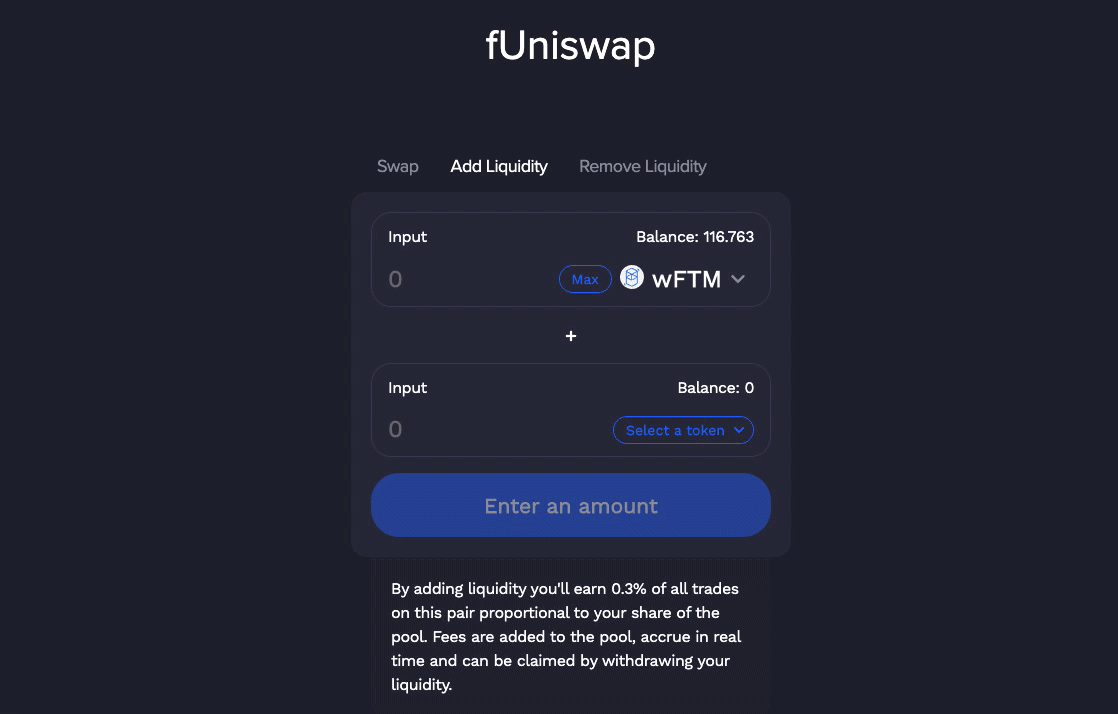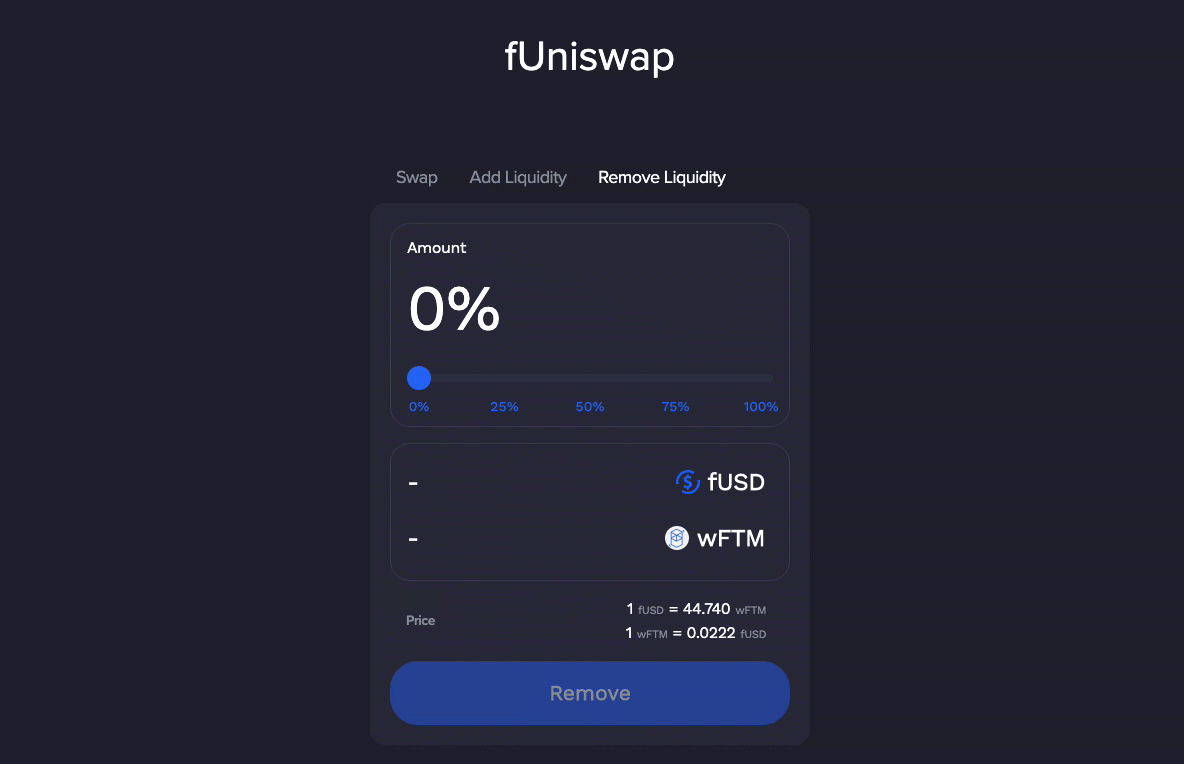Launching fUNI. Uniswap on Fantom

The wait is over! We successfully deployed fUNI on Fantom, both as a standalone application at fUNI.exchange and integrated within the Fantom Wallet.
What is fUNI?
fUNI is a Uniswap clone deployed on Fantom.
Here are the advantages of launching Uniswap on Fantom:
- Lower fees: unlike Ethereum, fees on Fantom are a fraction of a cent.
- Faster transactions: transactions on Fantom are normally confirmed in less than 2 seconds
All the other characteristics of Uniswap stay exactly the same. fUNI is a decentralized exchange that uses AMM (automated market maker) instead of order books. Liquidity providers provide liquidity and are rewarded with a portion of the trading fees.
Uniswap is a fantastic tool, but until today it’s been severely limited by the Ethereum network. Its high fees and high latency make the trading experience elitarian and complex.
Fantom and fUNI bring down those entry barriers.
fUNI is Uniswap, but better.
Which tokens can I trade on fUNI?
Right now you can trade fUSD and wFTM. Developers can deploy tokens just like they do on Ethereum as Fantom fully supports ERC20 tokens through EVM.
What’s the difference between fUNI and fSwap?
On fUNI you can trade real tokens. On fSwap you can trade synthetic tokens whose price is regulated by oracles.
How do I use fUNI?
- Login to your wallet at https://pwawallet.fantom.network/
- Using fSwap, swap your FTM to wFTM.

- Head over to fUNI where you can trade wFTM for fUSD and viceversa.

- Be amazed by the speed and the low fees
How do I provide liquidity on fUNI?
- Click on the “Add liquidity” tab in fUNI.
- Select the amount of fUSD or wFTM you want to provide. fUNI will automatically calculate the right amount for the other currency. When providing liquidity, you’ll provide 50% fUSD and 50% wFTM.
- Click on Supply and confirm with your password.

How do I remove liquidity on fUNI?
- Click on the “Remove liquidity” tab in fUNI.
- Select the amount of liquidity you want to remove and click on remove

Setting up Metamask for Fantom
- click on the Metamask extension
- select network -> Custom RPC
- Network Name: Fantom Opera
- New RPC Url: https://rpcapi.fantom.network
- ChainID: 250
- Symbol: FTM[embed]https://www.youtube.com/watch?v=NdtLxYcI0RU[/embed]
How do I use standalone fUNI?
- Go to https://funi.exchange/
- Login with Metamask
- Swap FTM for wFTM
- Follow the steps above to trade and add/remove liquidity
fUNI vs order book exchanges
fUNI is an AMM exchange; it uses liquidity pools instead of order books. Unlike order book exchanges like Binance, on fUNI you can only execute trades at market price and you can’t specify entry or exit prices.
fUNI is completely decentralized and liquidity is provided by Liquidity Providers rather than a centralized entity.
What are Liquidity Providers?
Liquidity Providers are users who commit their funds into the liquidity pools to facilitate trades and lower slippage. In exchange, Liquidity Providers earn fees paid by fUNI users.Taking the fUSD/wFTM pair as an example, as an LP you will provide both fUSD and wFTM so that your total will be 50% fUSD and 50% wFTM.
Let’s assume that FTM (and thus wFTM price) is $0.03. If you want to add 1000 wFTM to the liquidity pool, you’ll also have to add $30 fUSD. Don’t worry, fUNI makes the calculation for you.
By adding liquidity LPs will earn 0.3% of all trades on the trading pair, proportional to their share of the pool. Fees are added to the pool, accrue in real time and can be claimed by withdrawing the liquidity.
What is impermanent loss?
Impermanent loss is the risk that Liquidity Providers incur into. When trading happens, users will trade their tokens for the liquidity pool tokens. For example, if a user trades wFTM for fUSD, they buy and remove wFTM from the liquidity pool by selling and adding fUSD to the liquidity pool.
The more tokens there are in the pool, the more stable the price is. If the trading pair is illiquid, the price swings will be more violent.
From an LP’s point of view, whenever someone executes an order, they get more of one token but part of the other token is removed from their initial capital.
Let’s look at an example.
Let’s assume again that wFTM price is $0.03.
For simplicity, let’s also assume that Alice is the only LP for the trading pair, and she provides 10,000 wFTM and 300 fUSD, worth $600 total and split 50/50.
Bob wants to buy 100 wFTM and he trades 3 fUSD for it.
What happens to Alice’s capital? She now has 9,900 wFTM and 303 fUSD, plus a 0.3% fee accrued on the trade (split 50/50 between wFTM and fUSD).
Next, Chad comes to fUNI and wants to buy a lot of wFTM. He’s bullish. He buys 7,000 wFTM, causing the price to increase dramatically.
Now Alice has a lot more fUSD, but she only has 3,000 wFTM left. Compared to her initial state of 10,000 wFTM and 300 fUSD, her capital is now worth less than if she had held instead of providing liquidity, because wFTM price is much higher. This is impermanent loss.
Why impermanent? Because if someone sells 7,000 wFTM, Alice will go back to her initial state of 10,000 wFTM and 300 fUSD, plus all the fees she’s accruing on the trades.



